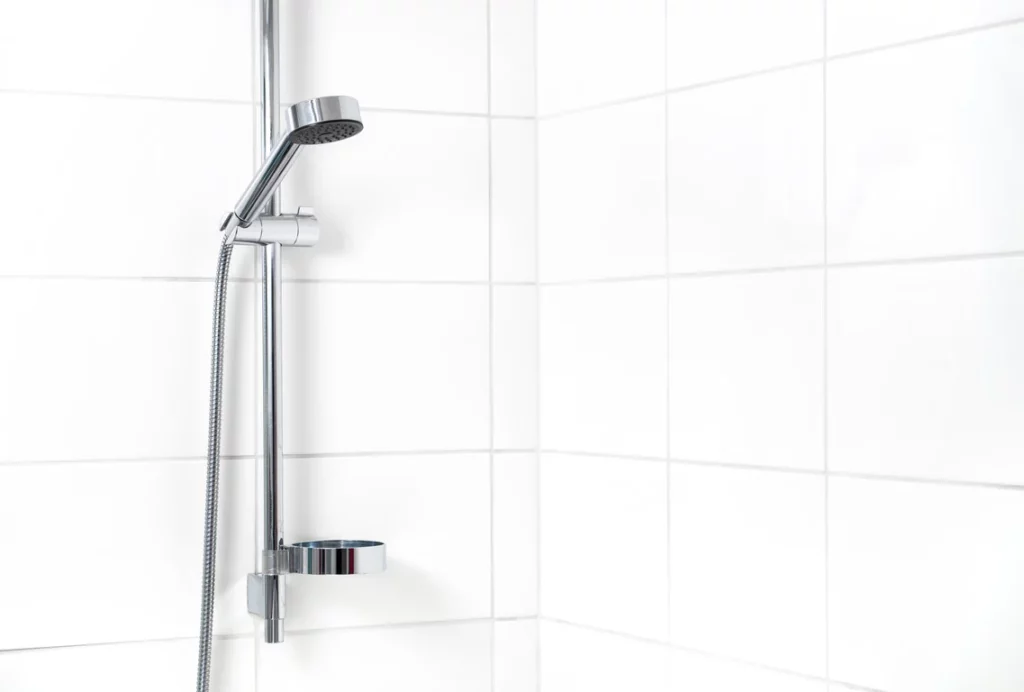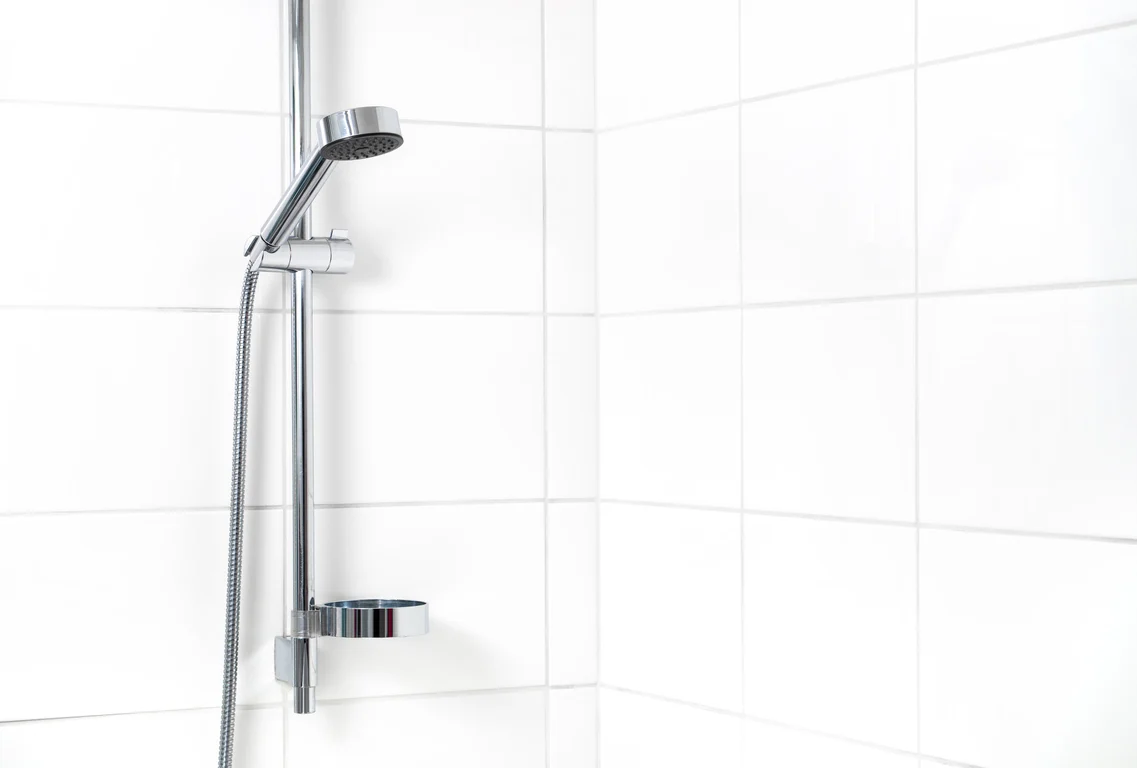On average, Americans spend over $11,000 on bathroom remodels. The bathroom is one of the first rooms in your home to start showing signs of aging. Discolored grout, an out-of-date tile installation and bathroom fixtures all date your bathroom. You might not have the time or the budget to completely remodel your bathroom, but small changes can go a long way when it comes to updating your bathroom space.


Knowing how to regrout shower tile can save you money in the long run by preventing more extensive repairs along the way while also teaching you valuable skills.
Regrouting can improve the look and function of your shower by revitalizing the appearance, cleanliness, and durability of your shower. It helps protect against water damage and improves hygiene. It will also ensure the tiled area is waterproof and will stop water from seeping behind your shower walls and floor to prevent any possible damage.
Regrouting shower tiles can be done by most people, and you do not need to be an experienced handyman to tackle this project successfully. So keep reading to find out how to regrout shower tile.
When to Regrout Tiles
It isn’t always obvious when you need to consider regrouting your shower tiles. You see them every day, so you might not notice the damage and discoloration that slowly appears.
Start by inspecting your tiles and grout for signs of wear and damage. It’s a good idea to inspect all your tiles at least once a year to catch any new issues. If you notice any of the following, it’s a good idea to regrout the area to maintain the integrity and appearance of your shower.
Signs of Damaged Grout
If you notice cracks or pieces of grout falling out, the grout has deteriorated and must be replaced.
Over time, grout can become discolored or stained due to dirt, mold, mildew, or the use of cleaning chemicals. This discoloration can’t be fixed through cleaning products. If your grout looks noticeably darker or has stains that can’t be removed, regrouting is advised.
If you see any black or dark-colored spots in the grout lines, it’s most likely mold or mildew. This indicates that moisture is seeping into the grout, and regrouting will eliminate this and prevent any further development of mold or mildew since the area is made waterproof again.
If the tiles in your shower area feel loose or unstable to the touch, it may be due to the deterioration of the grout. Regrouting can help stabilize the tiles and prevent any further damage. This is an easy way to save your tiles and extend their life expectancy, as regrouting is much cheaper than retiling.
If you notice water stains on the walls or floor next to the tiles, it could be a sign that water is seeping through the grout lines. Regrouting will restore the waterproofing properties of the area.
If the grout feels soft or spongy to the touch, it has already deteriorated significantly. This compromises the integrity of the whole area, and regrouting is urgently needed.
If there are visible gaps between tiles, then the grout has shrunk, leaving spaces that can collect dirt and moisture that will lead to damage in the area.
Why Should You Regrout?
When you regrout shower tile, you improve the overall appearance of your tiled area. Old stained and discolored grout can be hard to clean, so regrouting is sometimes the only option. Old grout can create an unsanitary environment as old dirt and debris can get stuck.
Grout is a barrier that prevents water from seeping in behind your tiles, and regrouting ensures that the waterproofing properties of your shower are maintained. It can also provide added support to loose tiles, improving durability and reducing the risk of damage, such as cracks or breaks in the tiles.
Regrouting is a cost-effective way to restore your tiles compared to having them replaced. It is also an excellent way to prevent damage or structural issues in the future.

Tools Needed for This Project
There are several power tool options available for grout removal, such as an oscillating tool, a rotary tool, or an electric grout removal tool. Consider the amount of grout you need to remove before purchasing any new tools. Manual grout removal tools like a grout saw or a heavy-duty grout removal tool with a carbide tip can also be used if you do not have access to power tools.
A grout float to apply the new grout is an important tool.
You need to pick up eye protection and a dust mask, as removing grout can create a lot of dust and mess. A vacuum cleaner to pick up any debris during and after the removal of the grout is also useful.
A grout finishing tool makes the entire process easier. This double-ended tiling tool has a rounded ball end that makes a neat grout line and a scraper end for removing excess grout.
Cleaning supplies like sponges to clean excess grout and smooth out the joints, cloths for cleaning during and after grouting, and buckets for mixing grout and cleaning afterward makes for a cleaner and tidier workspace.
Choose a grout in the color of your choice that is suitable for use in a shower. The use of sanded grout is recommended for shower areas as it is a durable and stable product. Grout sealer is an additional protection that can be added after the grout has dried out completely to protect against stains and discoloration in the future.
Prepare the Area
Clean the area to remove any dirt, mold, or soap scum. You can use a tile cleaner, a mild detergent, or a mixture of vinegar and water. Make sure your tiles and grout are as clean as possible, as it will make the next steps much easier.
Your tiles must also be completely dry before moving on to the next step, or you can encounter some problems. Consider cleaning your tiles in the evening and closing your bathroom until the following day, if possible. This will give your tiles and grout time to fully dry.
Start by removing all the old grout with either a power or manual tool. Take care not to damage the tiles, so do this slowly and carefully.
Vacuum or brush away loose grout debris from the area as you go. This is not a difficult job, but it can create a lot of dust and can be time-consuming.
Vacuum the area thoroughly and wipe away all traces of dust and debris before starting the regrouting process. If you don’t clean up the dust properly, it can end up getting caught in your new grout later on and change the consistency and finish of the grout.

How to Regrout Shower Tile
Mix the grout by following the instructions on the packaging closely. The consistency of the mixed grout should resemble smooth peanut butter. It must still be pliable without dripping from the trowel when picked up.
Consider using a latex-based liquid additive instead of water to mix the grout. This product is designed to be used as a water substitute when tiling or grouting wet areas such as showers.
If the mixture is too firm or there is still dry powder visible in the bucket, add more water. If the mixture is too watery, add more grout powder. You need to make sure you get the consistency right, so spend some time on this step.
Apply the grout using a grout float to spread the grout mixture diagonally across the tile joints, ensuring full coverage. Hold the float at a 45-degree angle and press the grout firmly into all the joints.
If you don’t press firmly, the grout might not sink down all the way to the bottom and can cause air bubbles to get trapped under the layer of grout. This can cause uneven grout lines and can even damage your tiles in the long run.
After about 15 minutes, when the grout starts to set, use a grout sponge dampened with water to gently wipe away the excess grout from the tile surface. Rinse the sponge frequently, and be careful not to wipe or drag the grout out from the joints.
Allow the grout to cure for the recommended time. Once cured, apply a grout sealer using a brush or applicator, following the manufacturer’s instructions. This step helps protect the grout from moisture and stains and will add to the longevity of the grout.
Easy Shower Remodel
Knowing how to regrout shower tile can give your shower a new lease on life. Discolored grout makes your bathroom look unhygienic, and you can never get it clean enough. So save yourself the time and effort and exchange your scrubbing gloves for a grout float and get cracking.
If you’re ready to start your bathroom remodel by regrouting your shower, contact us today. Rubi offers a wide selection of products and tips to help businesses and DIYers get the job done right the first time.



Post a comment